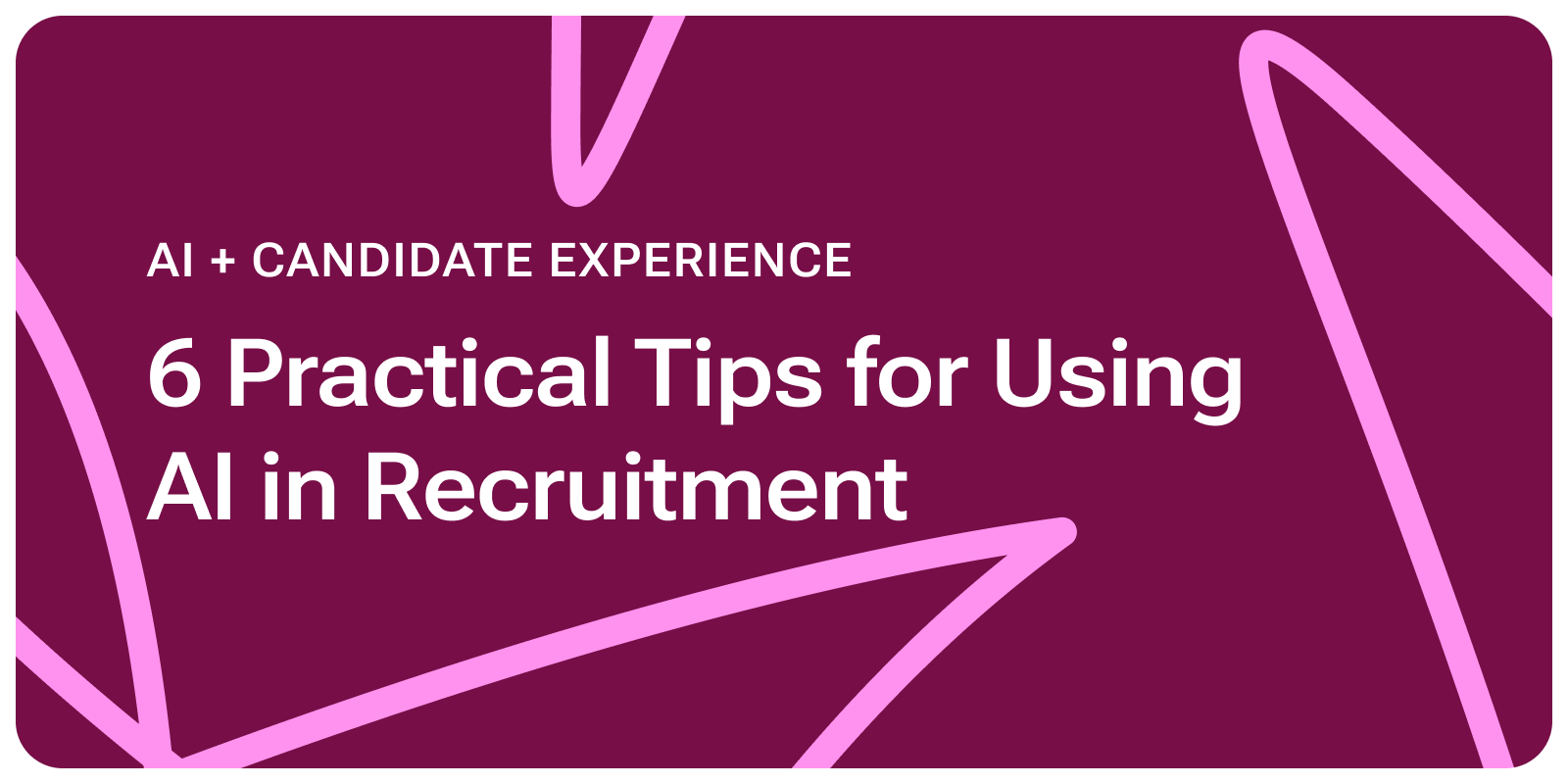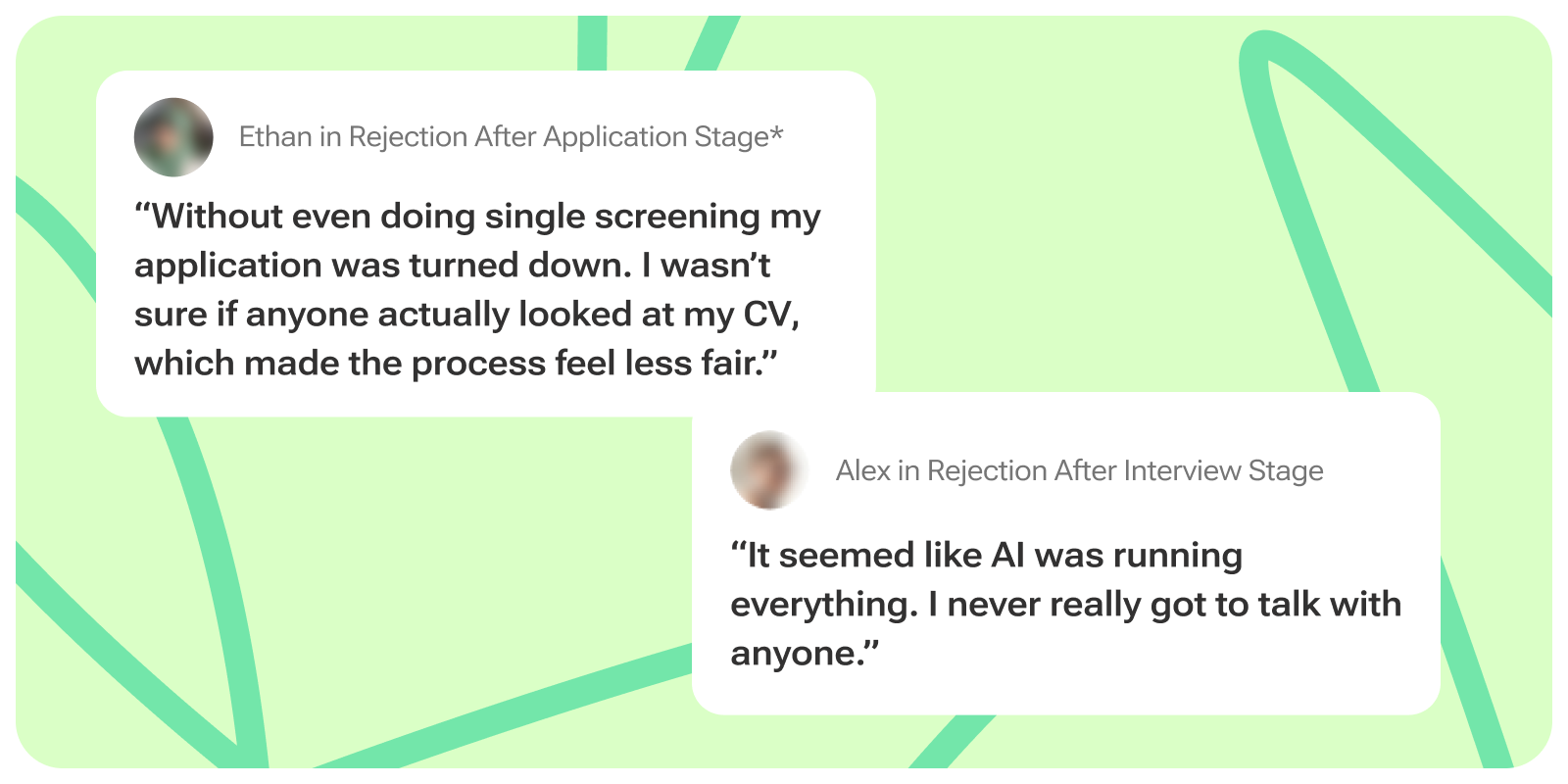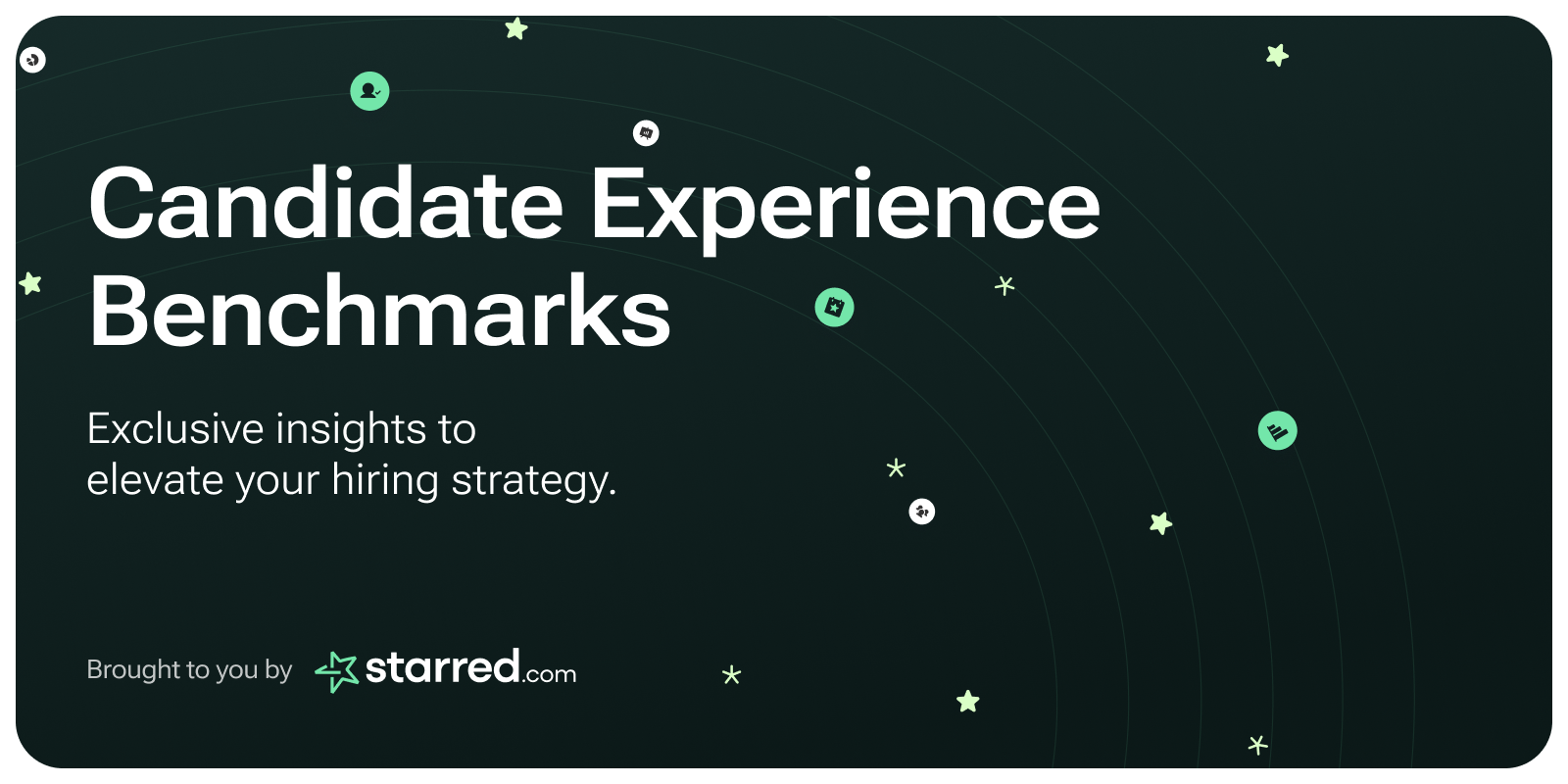Recruitment analytics is a vital tool for modern Talent Acquisition. It helps organizations optimize their recruitment process and improve hiring outcomes by measuring recruitment metrics and using data to inform recruitment decisions. By following best practices and using the right tools and techniques, organizations can attract and retain top talent with the help of recruitment analytics.
The way businesses operate advances at the speed of light. And the most successful companies are those who stay up to date with the latest trends and best practices or – better yet – get ahead and become trendsetters.
Following the trends and employing the latest technologies in a business' operations is not limited to commercial activities, such as product development, marketing or sales. Following the labor market's shift to a more candidate-centric reality, staying ahead of the competition in Talent Acquisition is more relevant than ever.
The secret to an optimized and productive hiring strategy lies in the recruitment buzzword of the moment: recruitment analytics.
What is Recruitment Analytics?
Recruitment analytics involves measuring and analyzing data collected throughout the recruitment process to optimize hiring efficiency and enhance hiring results. This involves data from all stages of the hiring funnel: from the careers page on your website, through application conversion to offer acceptance rates and new employee retention numbers.
As technology plays a growing role in Talent Acquisition, recruitment analytics has become a crucial aspect of the hiring process for companies who wish to stay ahead of competition in the oversaturated job market.
Benefits of a Data-Driven Recruitment Strategy
A Deloitte report highlights that 71% of companies consider people analytics a high priority. With increased access to big data and advanced reporting, companies can continuously monitor their recruitment performance from all angles of the process and start improving almost in real time.
However, simply having access to data is not enough to make your recruitment strategy more efficient. Instead, successful employers realize the enormous potential of using hiring analytics to inform their recruitment decisions and improve their outcomes in the long run.
Taking the time to collect, measure and analyze key recruitment metrics from all over your hiring process is what ultimately gets successful businesses those great employees and results in data driven insights.
Yet, some of the biggest benefits of employing a data-driven strategy for your recruitment efforts are:
- Improved hiring outcomes. Recruitment analytics enables organizations to make data-driven hiring decisions that result in better quality hires and reduced time and cost per hire.
- Better talent acquisition strategies. By analyzing recruitment data, organizations can identify the most effective sourcing channels and recruitment methods, enabling them to attract the best talent.
- Increased hiring efficiency. Recruitment analytics enables organizations to identify and eliminate bottlenecks in the recruitment process, reducing the time to fill open positions and improving team alignment.
Top Metrics in Recruitment Analytics
To measure the effectiveness of the recruitment process, there are several metrics (also known as Recruitment Key Performance Indicators, or Recruitment KPIs) to keep in mind.
Recruitment KPIs are measurable metrics used to track and evaluate the efficiency and productivity of a company's hiring process. In the next section, we will go through the key metrics that can help you implement data driven decision making in your hiring process.
Read More in: Top 6 Recruitment KPIs You Need to Track in 2025
Time to Hire
Time to hire is the number of days between a candidate entering the recruitment funnel (i.e. as soon as they submit their application) and the day they accept a job offer at the end of the process.
Recruiters also often refer to the “time to fill” which, by many, will be used interchangeably with the time to hire. However, these metrics are not exactly the same.
The former refers to the overall recruitment process, starting as soon as the job ad is published on the company website, while the latter focuses on the candidate journey itself.
A shorter time to hire can positively affect the Candidate Experience offered by your hiring process. Yet, rushing through the process can result in hiring the wrong applicants or making the candidates feel undervalued.
Instead, you should aim for a balance between a timely process with frequent feedback checkpoints, giving candidates an opportunity to perform, and a well-established framework for your recruiters and hiring managers to be able to choose the right candidates for the job.
Interestingly, a study conducted by Jobvite found that Talent Acquisition teams who employ recruitment analytics in building their recruitment strategy fill positions 20% faster than those who don't.
Cost per Hire
Cost per hire is the total cost of recruitment divided by the number of hires.
The total cost of recruitment includes all potential recruitment costs, such as: advertising, recruiter and hiring manager salary percentage, onboarding, work equipment for the new employees, recruiter tech stack (e.g. ATS, LinkedIn subscription), etc.
This metric helps organizations to determine the most cost-effective recruitment channels and methods.
For example, the average cost per hire in the US is $4,700. Let's say that you hire an average of 10 open positions a month, giving you a monthly cost of $47,000 on hires alone. This should already be a good enough reason to start monitoring the cost per hire metric in your recruitment efforts.
Candidate Experience
Candidate Experience is an extremely important metric for a well-functioning recruitment strategy. It refers to the overall experience a candidate has as they go through your recruitment stages: from seeing a job ad on your careers site, through interviews and onto the final decision.
As a KPI, Candidate Experience is measured by collecting candidate feedback and understanding their view of:
- Ease of application
- Quality of communication with the recruitment team or hiring manager
- Interview experience
- Level of constructive feedback throughout the process, especially if they're unsuccessful
In fact, companies who prioritize measuring and acting on the Candidate Experience metric are 70% more likely to improve their overall quality of hire. As a result, candidate-centric companies are not only able to hire more efficiently, but also positively influence their Employer Brand and attract more candidates (and, thus, customers!) to their business.
Are curious about the state of your Candidate Experience? We have a free Candidate Experience audit checklist that you can use to compare, evaluate and improve your recruiting process, download it here!

Candidate Net Promoter Score (cNPS)
The candidate NPS is a single metric that allows companies to get a sense of how their hiring efforts are perceived by those who go through the process: the candidates.
It is measured by asking candidates a very important question: how likely are they to recommend applying for a job at the company to their friends and family, based on the recruitment process alone?
The score is calculated by subtracting the percentage of detractors (candidates who would not recommend applying) from the percentage of promoters (candidates who would recommend applying).

A high cNPS indicates that the hiring process is contributing to a positive Candidate Experience and helps build a strong Employer Brand.
Read more in: How to measure Candidate Net Promoter Score?
Source of Hire
Source of hire measures the effectiveness of the channels you use to advertise open positions and collect applications, such as job boards, social media, and employee referrals.
By analyzing applicant sources, organizations can identify the most effective channels for attracting top talent that fits their ideal employee profile. Consequently, identifying the strongest channels enables the TA team to adjust their recruitment campaigns by allocating time and resources (both staff and money) to build a reliable and promising talent pipeline.
Our 2024 Candidate Experience Benchmark report revealed that internal applicants and referred candidates had the highest success rates in hiring. Despite making up only 1.10% and 5.98% of applicants, respectively, internal candidates have a 45% success rate, while 25% of referred candidates are hired.

Quality of Hire
Quality of Hire measures the performance and retention of new hires. This metric helps organizations to determine how effective their recruitment strategies are and identify areas for improvement if the quality is low.
The factors that allow you to measure the Quality of Hire include:
- The new employee's job performance
- Retention rate
- Employee satisfaction
- Hiring manager satisfaction
The higher the Quality of Hire score, the stronger the recruitment strategy that led to hiring those perfect candidates. This is because it reflects on your team's ability to attract, engage and hire the right people for your organizational needs.
Read more in: What is Quality of Hire?

Challenges in Recruitment Analytics
There are several challenges that organizations may face when implementing recruitment analytics, including:
Lack of Data
One of the main challenges faced by organizations wanting to implement a more data-driven approach to recruitment is a lack of data. Without the necessary recruitment data, how are you going to get any valuable insights?
This is especially true for smaller organizations or those who are at the beginning of their recruitment analytics journey.
Facilitating comprehensive data collection is a difficult mission to accomplish for most Talent Acquisition teams: from finding the right analytics tools and identifying the metrics to focus on to displaying all data points in a comprehensible manner.
Data Quality
Another challenge that can make the transition into a reality of recruitment analytics difficult is low data quality and inconsistent data sourcing strategies.
When data is incomplete, skewed or collected outside a specific framework, the results will be inaccurate. Possibly even leading to companies taking hiring decisions in the wrong direction.
In fact, a study by LinkedIn has shown that 42% of HR professionals cite “quality is poor” as a barrier to a more widespread use of data in their recruitment strategy.
Resistance to Change
However, possibly the most difficult challenge to overcome is resistance to change. This is especially true in larger organizations with longstanding roles and processes, established and cultivated since the beginning.
Some would argue: “why fix it when it's not broken?” and revert back to their old ways. Without proper education on the benefits of recruitment analytics, support throughout the change and technical training for every staff member working with recruitment analytics, the transition is bound to fail.
Best Practices for Implementing Recruitment Analytics
Switching to a whole new recruitment analytics process can be challenging, even for the most streamlined of organizations. To ensure the change is effective from the start, you could consider the following best practices:
Identify Your Recruitment Goals and KPIs
An effective transition into the world of recruitment analytics requires a thorough understanding of what you want to achieve. Ask yourself the questions:
- What are we hoping to improve? Is it the number of candidates entering the talent pool, the quality of hires or lowering the time or money spent on filling each open position?
- Are we currently measuring anything? What tools are we using throughout the recruitment process and do they already offer any data collection functionalities?
- What processes do we need to implement to ensure data is collected well throughout the process?
Read more about the top 6 recruitment metrics we recommend measuring here.
Collect Good Quality Data
Collecting data is one thing, but doing it properly is what will give you the most accurate and helpful results.
To set your company up for success, make sure you are collecting data systematically throughout the entire organization. This means that you should be asking the same questions (both internally and to the candidates) at every stage of the process.
Ideally, following a data collection framework will act as a checklist to gathering accurate, complete and up-to-date information.
Data integrity always comes down to the people using your processes – make sure all recruiters, hiring managers and Talent Acquisition specialists have access to support and guidance on the best ways to approach this.
Ways to ensure data integrity throughout your hiring efforts include:
- Using the Applicant Tracking System (ATS) properly and filling in all the necessary information the right way;
- Documenting every process and decision;
- Establishing and maintaining a systematic framework for every hiring process across the organization (e.g. the same number of stages, pre-written interview questions);
- Equipping all relevant staff with a handbook to refer to when going through the process, regardless of their role.
Find the Right Tools
Collecting the breadth of data necessary to get an accurate picture of the recruitment process manually would be a suicide mission. Without the right recruitment analytics software keeping track of all data touchpoints, results and organizing it in a comprehensive manner would be a full-time position in itself.
Thus, finding the right tools to do the job for you is not only going to ensure a higher data accuracy, but will also make you more efficient.
You are likely already using some tools that could make this easier. For example, most ATS tools will be able to give you a thorough overview of your entire recruitment process, measuring metrics such as time to hire or cost per hire.
If you wish to enrich your data and take a more holistic approach to recruitment analytics, you should consider collecting data directly from your candidates.
Candidate Experience specific tools, such as Starred, can elevate your hiring process by collecting, measuring and showcasing the right candidate data. With Starred, you can nail the Candidate Experience and cNPS metrics by:
- Designing personalized candidate surveys according to a proven driver framework, all with access to a library of pre-approved survey question templates;
- Integrating directly with your ATS to design a survey flow that fits your existing recruitment process;
- Ensuring all your surveys are sent to the right candidates, at the right time for highest data accuracy;
- Implementing and measuring the cNPS as your north-star metric for your recruitment performance;
- Displaying all candidate feedback data in a comprehensive recruitment analytics dashboards and outlining the most important action points;
- Conveniently brainstorming and consulting all data points with our experienced Product Managers for maximum productivity.

Continuously Monitor and Adjust
A successful implementation of recruitment analytics requires continuous monitoring of the data collected. By keeping track of your data, you will be able to identify trends and patterns to start optimizing the recruitment strategy or the data collection framework itself.
Regular data reports can help organizations stay agile and on top of the ever changing recruitment trends to ensure a constant influx of qualified candidates.
As quoted in Gem's 2023 Recruiting Trends Report, “In an economic downturn, data is how we prove the need for anything and everything, both quantitative and qualitative.” So it's time to start building a recruitment analytics strategy to make your hiring efforts as efficient as possible.
In Short
Recruitment analytics is crucial in the current competitive talent market, where companies must shift from merely operational reporting to predictive analytics to stay ahead of the competition in attracting top talent.
By leveraging recruitment analytics and measuring data throughout the hiring process, organizations can make data-driven hiring decisions, identify effective sourcing channels and recruitment methods, and eliminate bottlenecks in the hiring process.
The key metrics to measure in recruitment analytics include:
- time to hire
- cost per hire
- Candidate Experience
- Candidate Net Promoter Score (cNPS)
- source of hire
- quality of hire
Challenges organizations may face when implementing recruitment analytics are:
- lack of data
- low data quality
- resistance to change
Best practices for implementing recruitment analytics are:
- identifying recruitment goals and metrics
- ensuring data quality
- finding the right tools to measure and analyze data
- continuously monitoring and adjusting the recruitment strategy
Not sure where to begin with recruitment analytics?
Measuring everything won’t make your hiring better, but measuring the right things will. Focus on the KPIs that actually move the needle and leave the vanity metrics behind. Not sure where to start? Talk to our team to get started measuring metrics that matter.

.webp)




